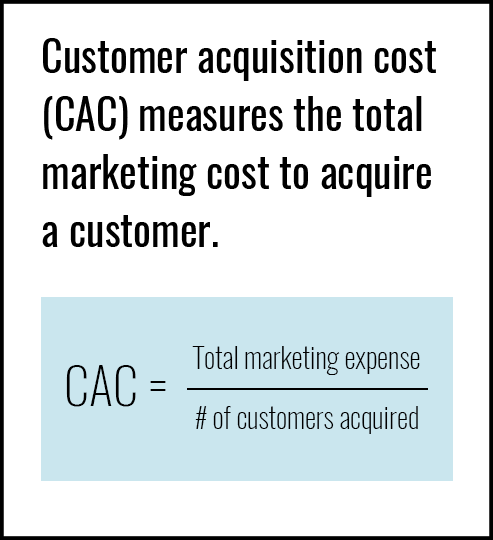D2C brands are driving up customer acquisition costs – and it’s time to course-correct
How digitally-native brands can get new customers -- and keep them -- profitably.

A panoramic Casper ad draws curious eyes in the subway car. Free product samples and a sponsored insert find their way into a glossy bag at checkout. And there’s a 3D Heineken wallscape stretched across a block of bars around the corner.
It’s a delicate balancing act for brands teetering between the worlds of traditional and digital advertising – one which leaves much to be desired when it comes to quantifying impact. Why invest in expensive out-of-home inventory when you could launch a display campaign for much less? Why mail a product catalog when you can send a targeted email? Why are so many digitally-native brands moving offline with their marketing?
For those digital brands with direct-to-consumer (D2C) sales models, online marketing is the lifeblood of growth. From targeted social to paid search, digital campaigns have proven an efficient and measurable way to build direct relationships with customers. But at what cost?
Digital saturation is driving up customer acquisition costs
While traditional marketing is often curbed by finite ad inventory and budget constraints, digital advertising exists as an open marketplace in which any digitally-fluent player can launch a far-reaching campaign – and do so relatively cheaply. Digitally-native vertical brands (DNVBs), in particular, revel in the instant gratification of marketing direct-to-consumer through online channels – and for good reason. These brands can own the entire funnel (and a goldmine of data!) to track every consumer detail – down to the exact cost it took to capture the customer. But as more D2C companies flood the scene, digital acquisition costs are skyrocketing.
Basic economics would dictate that a low barrier to entry paired with a high return on investment makes a slow-burning recipe for market saturation. The rising cost of acquiring customers (CAC) is a signal that we’re nearing saturation, and many brands will be faced with the reality that digital strategies alone no longer pay off.

“When demand rises but the supply is steady,
CAC is outpacing customer lifetime value
With the influx of D2C brands (and their inevitable competitors) playing fast and loose in the digital ad space, more dollars are needed to compete for the same impressions. As a result, CAC has reached a point where it’s outpacing customer lifetime value (LTV). This means the total amount a customer spends with a brand is less than the cost it took to acquire them, when calculating the marketing resource costs (effort and ad spend).

Mary Meeker, the famed internet trends analyst, touched on this issue in her 2019 Internet Trends report, deeming the rise in customer acquisition costs “unsustainable.” Depending on the industry, acquiring a new customer can cost anywhere from 5 to 25 times more than retaining current ones – and the cost will continue to rise as marketers attempt to stay afloat in a noisy digital marketplace.
“We all know that it’s much more expensive to acquire a new customer than to retain and grow the one you have,” said Jake Sorofman, CMO of Pendo. “This continued obsession
A fiercely competitive digital ad environment and a more saturated market will force D2C brands to seek more diverse, and potentially less-targeted forms of marketing. Likewise, they’ll need to stay hyper-focused on customer experience to retain a customer base for the long-term. For the digitally-native brands that grew up in the golden days of social advertising, sustaining growth in today’s environment means a return to brand-building basics.
Related: Welcome to the next era of social media marketing
Loyal consumers are
How to reduce customer acquisition costs and grow lifetime value
If loyal customers are the benchmark of value for a brand, then brands must be willing to give value back to those customers — particularly when it comes to data.
Deliver personalized value. “Digital and mobile experiences are a rapidly growing part of this equation,” said Mike Stone, SVP of marketing at Airship. “But these experiences can’t just be a novelty, there must be a true value exchange. The most impactful experiences are often highly personalized, and personalization requires some exchange of customer data… that means we need to give consumers something that clearly and proactively makes their lives easier.”
Examples of successful value exchanges include Wayfair’s augmented reality app that shows how furniture might look in a customer’s

When customers are able to benefit from meaningful connections with brands at a time of need, brands can build a lasting foundation that enables LTV by default.
Optimize your sales and marketing tech stack. Allowing automation and machine learning to power your marketing technology can free up sales and marketing teams to focus more on building
“Brands can use marketing tech to mitigate the rising customer acquisition costs. They’re using technology to unify customer data, create contextual single customer views, strategically segment customers, and treat campaigns as experiments to optimize as they go,” Yakuel explained. “In order to treat your customers the way they want to be treated, you need to look at all your marketing as relationship building, and find the right tools to get you there.”
Lean into the customer experience. Customer experience impacts how an audience will value a brand, and can also indicate how long a customer will stick around. The D2C brands that are making the most of customer experience
Julia Stead, VP of marketing at Invoca, explained that contextual, personalized customer experiences are essential to building lasting customer relationships.
“While there are many avenues like retargeting and freemium to get there, success depends largely on delivering on this personalized promise. Personalized, relevant and timely engagement is how you convert non-paying to paying customers, no matter the model. Brands need to ensure every touchpoint not only feels personalized but is also done cost-effectively,” said Stead.
But building a strong customer experience often requires a foundational shift in strategy, where digital advertising isn’t always the silver bullet. Achieving a reliable customer experience at every touchpoint involves marketers reaching beyond
Take for instance Narvar, a company that seeks to help brands elevate the post-purchase ecommerce experience for customers. “Direct-to-consumer players and bigger brands are doing a better job of bridging offline to online and vice versa,” said Elain Szu, VP of marketing at Narvar.
Szu explained how Rent the Runway, one of Navar’s clients, is making moves to ease the process of ecommerce transactions for customers. Rent The Runway teamed up with WeWork and Nordstrom to allow drop-off service at the brands’ physical locations – much like Amazon’s Locker or Counter service.
“While these offline locations help Rent The Runway retain customers because it’s making their lives easier, it also elevates the post-purchase experience by alerting them about the status of their orders and returns in a timely and relevant fashion,” said Szu.
An omnichannel brand experience – like that Heineken
If brands make the effort to deliver value and understand a customer’s journey at every touchpoint, the effectiveness of those offline activations will be reflected in digital lift. Like any marketing strategy, finding that mix will vary depending on the type of market and target consumer.
Planning for sustainable customer acquisitions in our hyper-connected world means returning to the basics and restructuring the digitally-native foundation on which many modern brands are built.

Contributing authors are invited to create content for MarTech and are chosen for their expertise and contribution to the martech community. Our contributors work under the oversight of the editorial staff and contributions are checked for quality and relevance to our readers. MarTech is owned by Semrush. Contributor was not asked to make any direct or indirect mentions of Semrush. The opinions they express are their own.
Related stories
New on MarTech